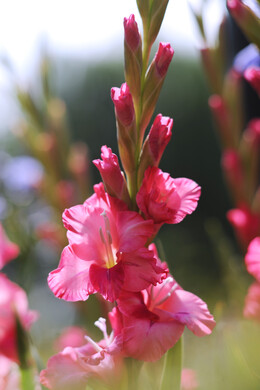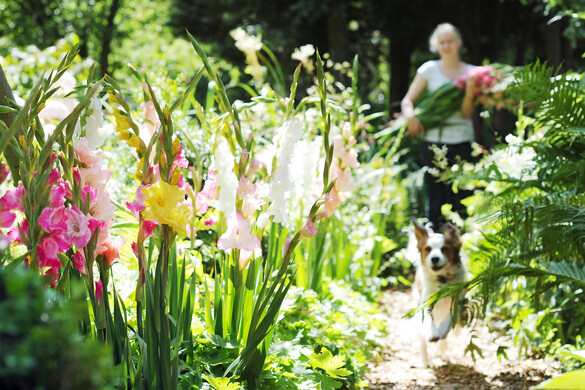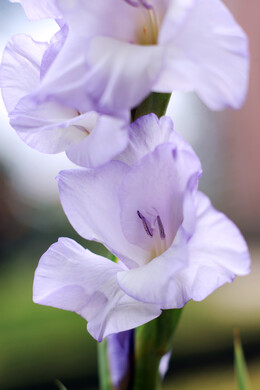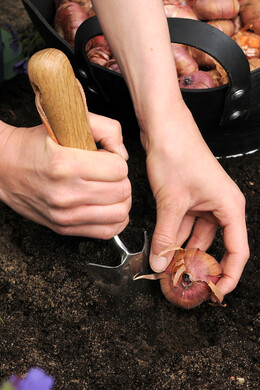Gladioli symbolise pride, strength and victory. It is best to buy and plant your bulbs in the spring. They will start flowering before the end of the current year and, with their explosion of colours, will bring summer vibes to your garden or balcony!
Broad colour palette
The flowers of gladioli grow on both sides of the stems. With – have you got a minute? – white, cream, red, yellow, pink, blue, purple, orange and lime green, the colour palette is very varied. There are even some with multiple colours per flower! The flowers are chock-full of pollen and nectar. You can enjoy them from July to October.
Large and small
Most of our garden gladioli are originally from South Africa and are not hardy. New varieties pop up regularly. With hundreds of different varieties, the large-flowered group is the largest. Some will actually grow taller than a metre. The Abyssinian gladiolus (Gladiolus callianthus ‘Murielae’, synonym: Acidanthera murielae) is an unusual large-flowered variety, with white star-shaped flowers and burgundy centres. They also provide a wonderful fragrance. Gladiolus nanus is an example from the small-flowered group. It is also called dwarf gladiolus.
Simple step-by-step plan
- Once the risk of night frost has passed, you can get started.
- Choose a spot with plenty of sunshine and well-drained soil; gladioli do not like wet feet. If necessary, you can make a small mound (‘raised bed’) and plant the tubers in it. Loosen the soil at the bottom and all around beforehand, though.
- For best results, add compost or organic fertiliser.
- Plant the tubers about 12 centimetres apart and 10 centimetres deep with the growing tip or ‘nose’ facing up. Fill the hole with soil and tamp it down lightly.
- Water the tubers after planting, then look forward to the results.
- Once the plants emerge, you can support the taller stems, so they won’t blow over.
- As soon as they bloom, get into the summer mood and enjoy!
 Interesting fact
Interesting fact
Gladiolus gets its name from its sword-shaped leaves. This Latin name is the diminutive of ‘gladius’ meaning sword. The flower is also called sword lily.
Practical tips
- You can plant gladioli in groups or position individual gladioli among other plants in the border. You can scatter the tubers in the garden and plant them wherever they end up, for a natural look.
- Gladioli also look great in pots, the lower varieties are particularly suitable for this purpose.
- If you are aiming for a longer flowering period, plant some tubers in a staggered manner (say, every other week).
- Curious to find out more? You can find more inspiration and information about flower bulbs at www.flowerbulbs.co.uk
To view Gladioli at Crocus click here
All images copyright iBulb
If you have enjoyed reading our blog post then why not fill in the form provided to allow us to send you our blog posts and newsletters by email. For all major gardening products, visit our shop from the menu above.



